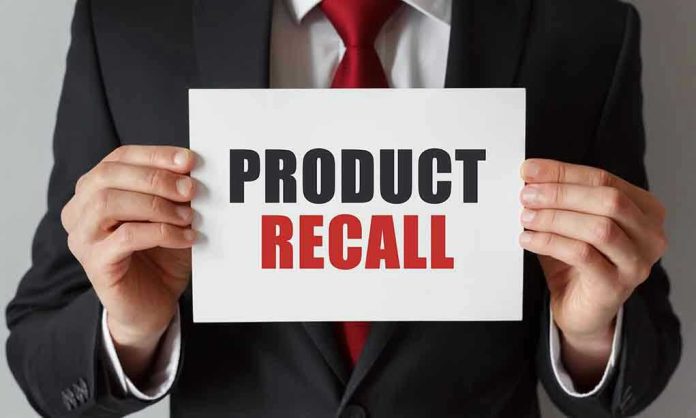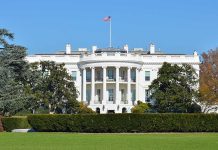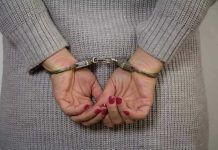
When a baby product is so dangerous that the government orders parents to destroy it before refunding their money, you know the stakes are life and death, and that a far bigger story is hiding behind the recall notice.
Story Snapshot
- The CPSC issued an urgent recall for Anna Queen baby play yards sold on Amazon, citing suffocation and entrapment hazards.
- Owners must destroy the product and submit photographic proof to receive a full refund.
- No injuries have been reported, but the risks are severe, and the batch is small, about 70 units.
- The recall exposes the challenges of regulating imported baby products sold online and may signal tighter future oversight.
Recall Orders Parents to Destroy Baby Play Yard
Federal safety regulators rarely mince words, but this time, their instruction is jarring: “Disassemble the fabric cover from the play yard frame, cut up the cover and mattress pad, and email a photo of the destroyed play yard.” The U.S. Consumer Product Safety Commission (CPSC) has issued a recall so urgent that parents aren’t just asked to return the Anna Queen play yard—they’re told to obliterate it before seeing a cent back.
This order, triggered not by a wave of tragic incidents but by a regulatory review, underscores the gravity of the product’s design flaws. The play yard, sold on Amazon by Anna Queen, an offshoot of Chinese manufacturer Guangzhou Tinger Trading Co. Ltd., entered the U.S. market in March 2025. By November, it was yanked, after CPSC inspectors found it violated mandatory safety standards. The risk: infants could become trapped under the mattress or wedged between the side and the mattress, a scenario that has caused fatalities in other products over the years.
Urgent Amazon recall as owners of baby item are told to destroy it immediately https://t.co/EGZg1vf6yO pic.twitter.com/SGfJ5n4J7x
— bulletinindy (@bulletinindy) November 25, 2025
Only about 70 units are affected, but the impact hits home for every parent who trusted Amazon’s virtual shelves. No injuries have been reported—yet the recall language leaves no doubt: this is a preemptive strike to avert tragedy. The CPSC’s credibility is on the line as much as Anna Queen’s, and the agency’s protocol of demanding photographic proof of destruction is a measure of just how seriously they are taking the threat.
Imported Baby Products and the Compliance Conundrum
Play yards, or portable playpens, are not new to regulatory scrutiny. U.S. safety standards grew teeth after past suffocation and entrapment tragedies, and every manufacturer knows the rules—or should. Anna Queen’s case is distinctive for its speed: a product arrives in spring, is flagged and pulled by fall, before a single injury is logged.
The CPSC’s aggressive approach reflects hard-earned lessons from previous recalls, but it also spotlights the global complexity of today’s baby product market. Guangzhou Tinger Trading Co. Ltd. operates overseas, and Amazon acts as a gatekeeper, yet neither is physically present in the homes where the danger lurks. Enforcement depends on vigilance, compliance, and, crucially, consumer action. The recall process here is both a test of parental responsiveness and a statement about regulator resolve.
Media coverage has amplified the urgency, but the real story is about the gap between U.S. safety laws and the realities of transnational e-commerce. Amazon’s marketplace hosts tens of thousands of foreign-made goods, and while the company’s product safety teams work to vet listings, enforcement ultimately relies on a patchwork of regulations, self-reporting, and consumer awareness. The Anna Queen play yard recall is a case study in what happens when that system is forced to act quickly and decisively, before tragedy strikes.
Urgent Amazon recall as owners of baby item are told to destroy it immediately https://t.co/EGZg1vf6yO pic.twitter.com/SGfJ5n4J7x
— bulletinindy (@bulletinindy) November 25, 2025
Stakeholder Responses and Parental Anxiety
For parents, the recall is more than a bureaucratic hassle; it’s a gut-punch reminder that trust in brand and platform can be misplaced. The process—destroy, document, then refund—may strike some as draconian, but experts say it is best practice for ensuring hazardous products don’t quietly slip into secondhand markets or donation bins. The CPSC’s directive leaves nothing to chance, and the lack of reported injuries so far is testament to the value of rapid intervention. Still, the optics matter: Amazon’s reputation is at stake, Anna Queen faces not just financial fallout but potential exclusion from future U.S. sales, and the CPSC must show the public that it is both vigilant and effective.
The broader baby product industry, meanwhile, is watching closely. Recalls of this nature send a ripple through supply chains and corporate compliance departments. For every batch caught before disaster, there are lessons—sometimes expensive, sometimes painful, about the costs of cutting corners or relying on self-certification in a global marketplace. Parents, for their part, are left to wonder what hidden dangers might lurk in the next box that lands on their porch.
Regulatory Fallout and the Path Forward
The Anna Queen play yard recall’s immediate consequences are clear: hazardous products are being removed from circulation, and affected families are being compensated. The longer-term effects are less certain but potentially profound. Amazon may tighten its vetting of imported baby goods, and the CPSC could push for sharper teeth in international enforcement. Consumer trust—always fragile—will depend on visible, effective action and transparent communication.
Product safety experts point to the recall as proof that the system can work, even for small batches and foreign brands. Consumer advocates, however, stress the need for more proactive screening—catching dangerous items before they ever reach a shopping cart. Legal complexities abound, especially when it comes to holding overseas manufacturers accountable. What’s certain is that the story of the Anna Queen play yard is no isolated incident. It is a warning shot, a case study, and—if regulators and retailers heed the lessons—a possible turning point in the ongoing struggle to keep America’s youngest consumers safe.










